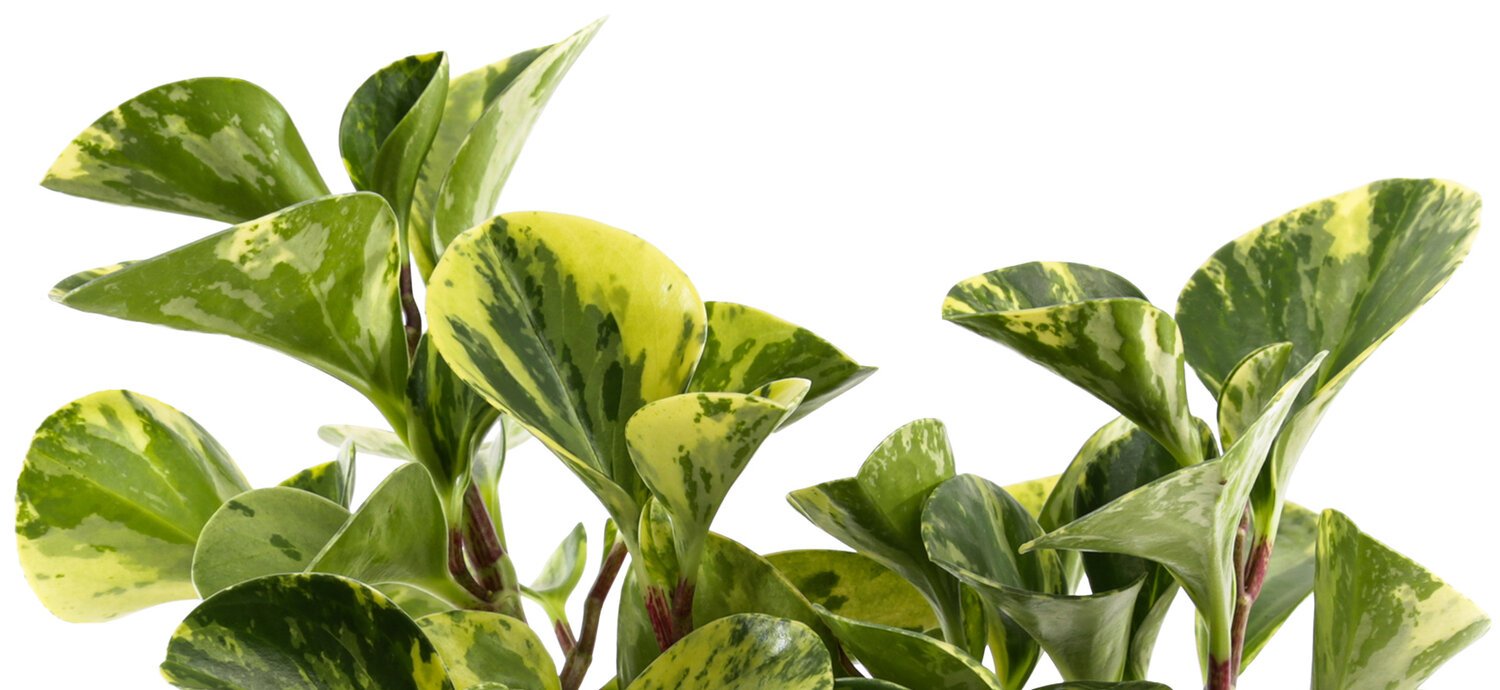Peperomia
Peperomia obtusifolia, popularly known as Marble Peperomia, originates from the Caribbean. It is a stunning low-maintenance houseplant. Marble Peperomia gets its name from its variegated leaves which offer various shades of greens and creams beautifully blended in a marble pattern. This plant tolerates a moderate level of neglect, making it the perfect houseplant for beginners or for your desk at work.
Climate - Peperomia is tropical so it will not tolerate temperatures below 30 degrees Fahrenheit. Some people like to plant them as annuals outside, but most people prefer keeping them indoors year round. They also thrive in humid environments. If your house is dry, you can set its pot on top of a saucer full of pebbles. Add water to the pebbles as needed to increase the humidity immediately around the plant. Don’t let the pot sit in standing water though (very few house plants want to sit in standing water).
Sun - These plants love filtered light. You can set them in a sunny window (not too close to the glass) or an east facing window to get the less intense morning light. They can fare well with ~14 hours of artificial light (like in an office). If your plant isn’t getting enough light, it will start to drop leaves and lose color. Do not mistake these symptoms for lack of fertilizer. The problem is almost always light, not fertilizer.
Soil - Peperomia likes well-drained soil. A good houseplant soil or a chunky orchid soil is great for this plant. These plants tend to grow as epiphytes or in dense understory in nature so they do not need a lot of nutrients. If the potting mix you use seems too dense for this plant, use a handful of peat moss to lighten it up.
Water - Peperomia is essentially a succulent! It has thick leaves with a waxy coating. It is great at maintaining water so it doesn’t require a lot. It likes dry down cycles. But remember, it does prefer a bit of humidity in the air. If you use saucers under your potted plants to protect your furniture or windowsill, make sure the bottom of the pot isn’t sitting in a puddle of water after you water. Let it drain all the way. Dump out any standing water a few minutes after you irrigate— this will prevent your plant from drowning in overly saturated soil.
Fertilizer - This plant doesn’t need it! These plants are very slow growing. In fact, this plant likes to be a little root bound. The potting media has all the nutrients this plant will need for a long while. Eventually (think several years) it will run out of nutrients. Instead of fertilizing it, wait until roots start to peak out the drainage holes, then re-plant it into a pot about an inch bigger than its previous pot. Fresh potting media means fresh nutrients for this low feeder. Dropping leaves is almost never a sign of poor nutrition in this plant. If your plant is turning yellow, dropping leaves, or losing color, it is more likely to be from irrigation or light problems.
Pests - This plant gets very few pests, especially when indoors.
Other Care - This plant is so slow growing that it will actually collect dust. A few times a year, take a damp paper towel and wipe its leaves clean. Too much dust on its leaves will prevent it from soaking in enough light.
One final note: This plant is sometimes called a baby rubber plant, but it isn’t in the same genus as a true rubber plant. While rubber plants (the ficus genus) have sap that can cause irritation of mucus membranes and the gastrointestinal tract, Peperomia is not toxic to pets or kids. But try not to let them eat it!
Marble Peperomia is one species in a very large genus of Peperomia. All have similar care needs, but sometimes very different looking foliage. If you’re wanting a variety of houseplants but don’t want to commit to different care regimens, consider a collection of Peperomia for your home or office.

